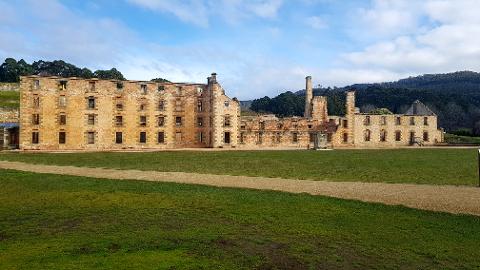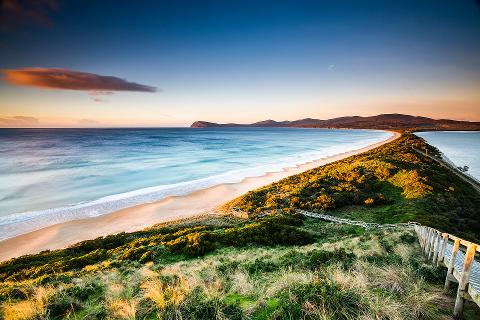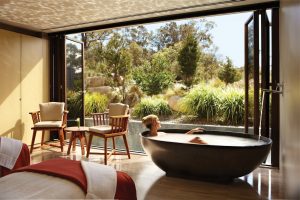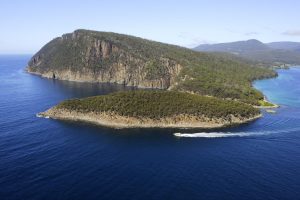
The Cape Bruny Lighthouse, when lit, can be seen for 26 nautical miles. This 13-meter, convict-built dolerite tower was the fourth lighthouse constructed in all of Australia and has the honour of being the longest continuously manned lighthouse in the country. The lantern inside was first lit using sperm whale oil in 1938 and was continuously lit until the tower was decommissioned in 1996.
A permanent caretaker was tasked with the upkeep of the premises from 1996 until 2011. Now, this historic lighthouse is cared for by a group of revolving volunteers. Each volunteer occupies the caretakers home for a 4-week period before rotating to another volunteer. And you want to run into one of these volunteers to make your visit to the lighthouse as informative as possible.
The volunteer caretakers work for the South Bruny National Park. This historic lighthouse was incorporated into the national park in 2000. Attempts to privatize the operation of the lighthouse have failed and the historic site remains under the care of the Park Service.
Region and Getting There
The Cape Bruny Lighthouse stands on the rugged southern tip of Bruny Island in the waters south of Hobart. The quickest way to the lighthouse is a drive south from Hobart to Kettering. There, you'll board a ferry to Bruny Island where you can continue your drive south to the island's southern tip and the lighthouse. Vehicle access to the lighthouse is permitted between the hours of 9:30 AM and 4:30 PM. It should be noted that dogs are not allowed in Tasmanian national parks.
It's nearly a 5-hour drive from the inland city of Launceston, and and it will take you over 5.5 hours from the north coast town of Devonport.
Attractions and Activities
Volunteer caretakers will allow you inside the lighthouse if they are on the premises. You will only be able to tour the ground floor if you arrange for a tour of the facility ahead of time. There is one company that takes visitors on a tour of the entire South Bruny National Park with a visit to the top of the lighthouse included. On a clear day, you can see Southport on mainland Tasmania which sits 15 kilometers across the water. You can also marvel at the violent coastal activity in southern Tasmania that wrecked many ships in the early 1800's and inspired the construction of this long-tenured lighthouse.
Follow the walking track down the beach and you'll run into two graves surrounded by a white picket fence after passing a concrete foundation. The foundation was the original keeper's cottage that was demolished in 1949 because the government deemed it redundant. The graves belong to two small children who perished in the late 1800's from the harsh conditions of the southern side of Bruny Island.
You'll find a stone wall separating the beach from a small vegetable garden at the bottom of the track. This area was built by convicts and convicts were tasked with the upkeep of the garden. It must've been a difficult task as the southern side of Bruny Island is inhospitable with salty spray and harsh winds.
Environment and Climate
The temperature at the lighthouse remains remarkably constant throughout the year. The average high fluctuates between 12°C and 20°C while the average low ranges from 6°C to 12°C. And while you'll rarely see snow on the island, you can expect rain and wind at times.
Birds
The southern tip of the national park is a great place to see all of the endangered and endemic bird species that Bruny Island has to offer. One-third of the world's Swift Parent population lives here as well as the endangered Forty-spotted Pardalote. You'll also be able to spot 13 of Tasmania's 14 endemic bird species. And during the breeding season, you can see up to 240,000 breeding pairs of Short-tailed Shearwaters.
Facilities
Volunteer caretakers also operate the Cape Bruny Lighthouse Museum. This small museum is worth a visit for its marine treasures illuminating the difficult way of life on the southern side of this rugged island in the 1800's.





























































































